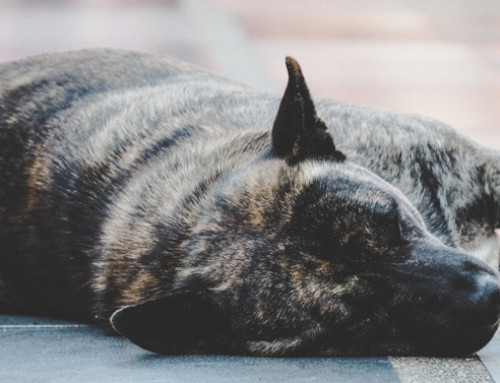December, the most popular two months of a dog breeder’s year as dog ownership increases and sales peak. In the spirit of finance and pet ownership, we wanted to look at how you can go about calculating the true cost of dog ownership, so you are prepared (financially) before you bring your bundle of fur home.
Using any corporate finance methods, the investment would obviously result in a negative NPV. Why? Because a dog, or any pet, is not an investment which is expected to yield a cash inflow.
We are focusing on typical dog ownership, where dogs are a family pet!
In accounting terms, when we think of our personal balance sheet in the household, investment in a pet would be classed as livestock, sitting on the asset side of the balance. Clear as day, right?! Let’s forget some of our corporate finance and accounting methods start with calculating the cost of dog ownership.
How to Calculate the Cost of Dog Ownership
Dog ownership should be thought of as both an emotional and financial commitment and so a decision should be taken based on both of these variables at a minimum. Being a responsible dog owner starts far in advance of ownership and understanding the financial commitments required in order to own a dog.
When calculating the cost of dog ownership, we could opt to use someone else’s primary research, such as the RSPCA, who tell us a small dog will cost us $2,100 (AUD) each year.
However, we all love personal finance, so that wouldn’t be much fun at all. So, in order to have some fun let’s think about the two main expenses when we think about owning a dog:
- Initial (One Off)
- Annual (Ongoing)
If we can identify the items in each category, the variables which influence price changes we can then accurately predict the lifetime cost of dog ownership through combining both of the costs.
Expense Items
Starting with the initial costs of dog ownership, the major expense here are:
- Crate (and Bed)
- Equipment (Collar, Bowls and Leash)
- Purchase Price
- Spay/Neuter
- Toys
- Vaccinations
Ongoing annual costs, which are often more substantial than the initial investment, would be:
- Licencing
- Food
- Grooming
- Insurance
- Toys/Treats
- Training/Classes /Doggie Day Care
- Veterinarian
Some of the items are macro categories for further expenses, an example of this would be veterinarian fees; this would include vaccines, boosters, dental care, vitamins and heartworm, etc…). Once we have identified the expense items, it’s time to put a price next to each category.
The price in each of these items can vary dramatically, we will discuss this below in variables which influence cost of dog ownership below. However, using your financial expertise, you can easily undertake secondary research online to put a cost.
In the example below, I have completed the costs as an example for a small designer dog breed, however, it can be re-used for any dog size of breed. The prices in the table are absolute prices, which I wouldn’t recommend using, as you would be better using a range and then performing a sensitivity on the changes in price.
| Initial | Ongoing (Annual) | |||
| Crate (and Bed) | 150 | Veterinarian | 185 | |
| Equipment (Collar, Bowls and Leash) | 60 | Food | 225 | |
| Purchase Price | 1250 | Grooming | 120 | |
| Spay/Neuter | 120 | Insurance | 300 | |
| Toys | 55 | Toys and Treats | 100 | |
| Vaccinations | 150 | Training/Classes | 190 | |
| Total ($)
AUD |
1,635 | 1,115 | ||
For the initial expense of purchasing a dog and preparing your home for the arrival of your pet, you can expect to spend around $1,635 and then an annual expense of $1,140. If the lifespan of a dog is between 10 to 15 years, taking a 12-year lifespan, we can easily do the math to determine the lifetime cost of ownership. It is:
$1,635 AUD + ($1,140 AUD * 12) = $15,315.
A formula you can use when determining the lifetime cost of dog ownership is:
Initial + (Annual Expense * Dog Lifespan)
Variables Which Influence Cost of Dog Ownership
$15,315 is our initial estimate of lifetime dog ownership cost. From this number we can now bring back our financial analysis and accounting techniques to get a more realistic number.
Sensitivity Analysis
To start with, the lifespan of our dog will have a huge influence into the lifetime cost. You will want to do a sensitivity analysis on how lifespan increases your lifetime spend. Other variables to perform sensitivity analysis on would be dog breed, veterinarian and insurance costs. These costs contribute a significant proportion of expense when it comes to determining the true lifetime cost. For example, adopting a dog, will be far cheaper than purchasing a puppy.
If you wanted to get really fancy, I’m sure you could even use a monte carlo analysis of these variables to model eventualities. However, that’s for another day!
Once you have completed a sensitivity analysis on the variables you will end up with a range of potential expenses which you can then classify into highest and lowest probability.
For a bit of extra fun, you could even determine the true “cost” of dog ownership by using your own weighted cost of capital, or, even the opportunity cost of not investing the funds as opposed to dog ownership.
Whilst we discussed above, that pet ownership is more emotional than financial, it is still a fun exercise for our financial minds!







Leave A Comment